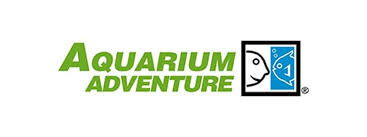Over Feeding Fish
Is it possible to overfeed your aquarium fish?
Yes, like many other animals they will eat until they are full and the rest of the food will go un-eaten in the aquarium.
What can happen if you give them too much food?
All excess un-eaten food will begin to decompose releasing organics and ammonia into their water environment. Too much organics and ammonia can challenge the workings of the aquariums filtration system (this filter system is what maintains good healthy water quality).
Is it possible that they could die?
It’s possible. If there is more food decomposing than what the filtration system is capable of handling, the water quality can go south quickly, stressing the fish, which can cause them to get sick and even die.
If there's food left behind in the bowl or aquarium that they don't eat, can it pollute the water?
Yes. As explained before, un-eaten food will decompose into organics and ammonia that can adversely affect the water quality (pollute it).
How much food should you be giving your fish? Does that amount vary depending on the type of fish?
Because fish spend all day hunting for and grazing on food, it is best for their health and well-being to feed them in your aquarium several times a day. Here in lies the challenge, the several feedings a day have to be very small, so as not to cause a water quality problem from too much uneaten food. When food is put in, it should never reach the bottom (unless we are feeding bottom feeders), if it does then too much was put in at that time.
What if you have an entire aquarium of different fish?
There are many kinds of foods available as there are many kinds of fish. There are fish that eat at the surface, there are fish that eat off the bottom, there are fish that off of plants, there are fish that eat off of tree trunks submerged in the water and there are fish that hunt and peck throughout their environment. The location of the fish’s mouth tells a lot about the type of feeder it is and where it finds its food. For example, fish that have mouths located towards the top of their body, generally feed at the surface of the water. Fish with mouths located on their underside feed off the bottom, for example, scavengers. Some fish are herbivores (eat plants and algae), some carnivores (eat other fish and animals) and some are omnivores (eat both). The trick is to feed various kinds of food so that all of the different fish types get the food they need.
Is there a rule you can follow to make sure you're giving them the proper amount of food? Should you be feeding them once a day? A few times a day?
When food is put in, it should never reach the bottom (unless we are feeding bottom feeders), if it does then too much was put in at that time. So, a little bit (pinch) goes in so all of the fish eat it before it reaches the bottom, then a little more can be put in so all of the fish eat it before it reaches the bottom and so on for about 3 minutes ---- this routine can be done two or three times a day. For bottom feeding fish, 1 wafer or tablet (special “bottom” fish food) can be fed for every two or three bottom fish every other day. This is all much generalized, and every aquarium will have its own special mix of fish and feeding regimes will need to be adjusted.
What types of foods should you be feeding your fish?
There are many kinds of foods – live, frozen, freeze-dried, prepared pellets, flakes and liquids. All of these can be used and varied amongst the different types of fish in your aquarium. Mix and match to keep your fish interested, stimulated and healthy.
Should you be mixing it up for an optimum diet?
Yes. Most aquariums are made up with many kinds of fish and so, many kinds of feeding types, which can become confusing and a challenge for fish keepers. Because today we have so many good aquarium fish food choices available, this can be an easy and fun challenge to overcome. There are foods made and designed to work for all fish feeding types and mixing them up and feeding a varied diet ensures all fish get what they need.
